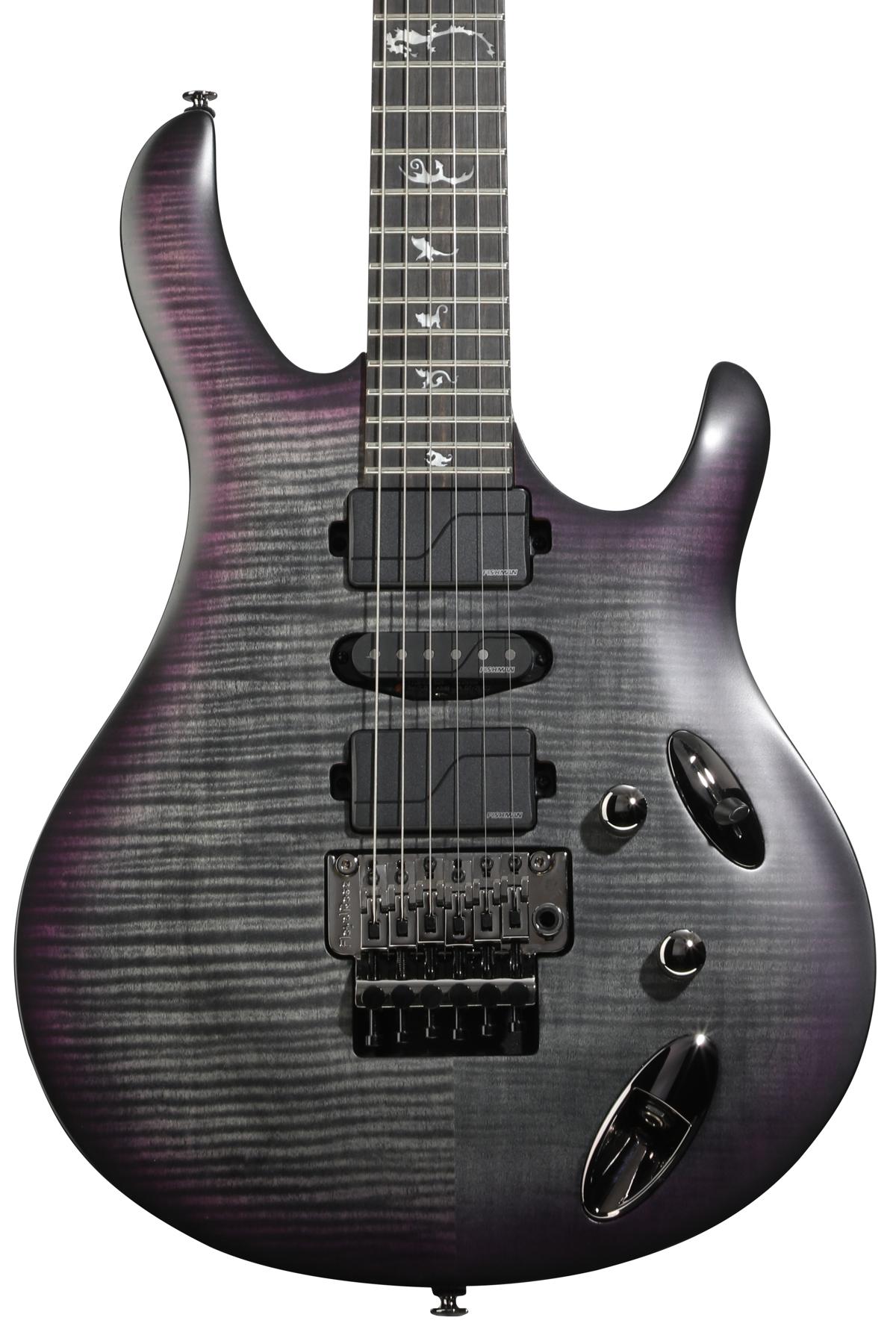Like Cerberus of myth, Universal Audio is a three-headed beast. The company manufactures pro audio hardware, often inspired by the vintage designs of Bill Putnam—founder of the original Universal Audio company and father of the new UA’s leaders, James and Bill Jr. UA also concocts superb digital versions of classic and modern analog gear. Then there’s Apollo, a line of audio interfaces that double as plug-in hosts. These range from the flagship Apollo 16 to the small-footprint Apollo Twin, recently updated to the MkII reviewed here. (Apollo hardware/software runs on Mac OS and Windows.)
UA’s “heads” are often intertwined. UA plug-ins only run on UA hardware. And the Twin MkII’s bundled plug-in suite includes great-sounding models of the Universal Audio LA-2A and UREI 1176 compressors, and the UA 610-B preamp—which are all, to some degree, Bill Putnam Sr. designs. The MkII also comes with a Fairchild limiter model and additional long-in-the-tooth legacy plug-ins.
You don’t need to purchase additional plug-ins to make good use of Apollo. You might simply use its gorgeous mic preamps and A/D/A convertors to route audio to and from your DAW, relying on plug-ins you already own. Still, most Apollo users wind up purchasing additional software. I certainly did! I seldom fumble through a mix without my two favorites: Ampex ATR-102, a 2-track mastering deck simulation that makes everything bigger and warmer, and EMT 140, a drop-dead replica of the sweetest plate reverb ever. In a touch of old-school marketing savvy, UA also makes fully functional, two-week trial versions of all 89 UA plug-ins free.
Busy Box
The Twin MkII is powerful enough to serve the I/O needs of a modest project studio, but small enough to bring to rehearsals and gigs. As one of the few guitarists foolish enough to perform via a laptop more than once, I’ve been using the original Twin since its 2014 release. The software and hardware have performed flawlessly. The sound quality equals that of the large-format Apollo in my studio. And I’ve been able to gig with sounds that simply don’t exist in the stompbox world.
Processing capacity differentiates the three versions of MkII. The $699 model has a single SHARC processor. The $899 version has two processors, and the $1,299 version we tested has four. Processing needs vary from plug-in to plug-in. But at risk of oversimplifying, a single processor lets you add a few favorite UA plug-ins to your mixes. The dual-processor version might shoulder much of mixing’s processing demands, though you may need to incorporate native plug-ins on big mixes. The quad version may let you mix using UA plug-ins exclusively—at least on less-than-huge sessions. Additionally, all Apollo interfaces can be linked. So, for example, I can wire the Twin to my larger 8-channel Apollo for extra I/O and processing power come mix time.
Twin MkII communicates with your computer via Thunderbolt cable. It houses two pristine-sounding mic preamps, fed by two balanced mic/line inputs plus a 1/4" guitar input. There’s also an ADAT cable jack for eight additional input channels (digital only). There are stereo monitor and headphone outs, two additional analog outs (perfect for sending musicians a headphone mix), plus eight digital outs via ADAT cable. As on MkI, you set all levels via the large encoder wheel and assign functions via a set of physical switches.
Ratings
Pros:
Superb audio quality. Compact, solid, and ergonomic. Access to stellar plug-ins.
Cons:
None.
Tones:
Ease of Use:
Build/Design:
Value:
Street:
$1,299 street as reviewed with quad-core processor (models start at $699)
Universal Audio Apollo Twin MkII
uaudio.com
Console Me
The Twin package includes UA’s Console app—a virtual mixer so attractive and full-featured that most DAW mixers weep in envy. You don’t have to use Console. You can input directly to your DAW without launching the app. However, Console unlocks one of Apollo’s coolest features: “Unison technology.” Here, you can record through certain plug-ins before the signal reaches your DAW. Unison’s latency is absurdly low. It truly feels like tracking through hardware.
Only a fraction of UA’s plug-ins can run Unison-style, but they’re the ones you’re likeliest to use that way: compressors, preamps, and virtual guitar and bass amps and effects (but not the amp models included in the MkII bundle.)
New for II
MkII offers several new and improved features. According to UA, the A/D/A conversion has been redesigned for improved sound quality. I don’t doubt the claim, though I confess I don’t hear a massive difference when recording electric guitars. (It might be more apparent with fuller-frequency material, or to engineers with better ears.) There’s a nice new feature for project studios: a built-in talkback mic that lets you speak to performers over the headphone mix.
But this may be the coolest MkII feature: no price increase. The single- and dual-processor MkIIs cost the same as the MkI versions. (The quad-processor version is new.) Also, note that since MkI’s release, UA developed a fine library of virtual guitar and bass amps licensed from Marshall, Fender, Chandler, ENGL, Friedman, and Ampeg. These aren’t included in the MkII bundle, but you can explore them via the two-week demos.
The Verdict
We raved about the original Apollo Twin in the September 2014 issue, and the rave goes on. Twin MkII has enough connectivity for ambitious project studios, yet it’s small enough for a gig bag. The audio quality is superb. The build isn’t just studio-worthy; it’s stage-worthy. Unless you specifically need the new features, there’s probably no rush to dump your MkI. But MkII is a perfect entry portal for UA newcomers.









![Rig Rundown: Russian Circles’ Mike Sullivan [2025]](https://www.premierguitar.com/media-library/youtube.jpg?id=62303631&width=1245&height=700&quality=70&coordinates=0%2C0%2C0%2C0)


























